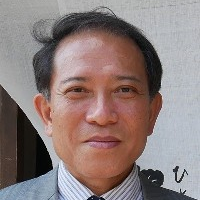Majorana Fermions and Topological Materials Science
A special issue of Condensed Matter (ISSN 2410-3896).
Deadline for manuscript submissions: closed (30 September 2019) | Viewed by 27004
Special Issue Editors
Interests: synchrotron radiation research; protein fluctuations; active sites of metalloproteins; origin of life; selected molecules in prebiotic world; quantum phenomena in complex matter; quantum confinement; superstripes in complex matter; lattice complexity in transition metal oxides; high Tc superconductors; valence fluctuation materials
Special Issues, Collections and Topics in MDPI journals
Interests: thermal convection and chaos in helium superfluids, magnetism and superconductivity in Chevrel-phase and heavy-fermion compounds, substitution effects in cuprate high-temperature superconductors, spin frustrations in spin ice, unconventional superconductivity and metal-insulator transitions, non-equilibrium steady states (NESS) of strongly correlated electron systems, topological quantum phenomena
Special Issue Information
Dear Colleagues,
Following the initial outbreak of research triggered by the discovery of topological insulators just a decade ago, the concept of topology continues to drive the expansion of the frontiers in modern condensed matter physics.
Target topological materials of current interests include various forms of superconductivity, novel semimetals, and correlated magnets. Efforts to firmly establish Majorana particles in condensed matter also extends to these variety of topological materials. The aim of this special issue is to bring together active scientists in this field to discuss recent advances in topological materials science, thereby to identify the most important questions and find directions to answer them.
Prof. Antonio Bianconi
Prof. Yoshiteru Maeno
Guest Editors
Manuscript Submission Information
Manuscripts should be submitted online at www.mdpi.com by registering and logging in to this website. Once you are registered, click here to go to the submission form. Manuscripts can be submitted until the deadline. All submissions that pass pre-check are peer-reviewed. Accepted papers will be published continuously in the journal (as soon as accepted) and will be listed together on the special issue website. Research articles, review articles as well as short communications are invited. For planned papers, a title and short abstract (about 100 words) can be sent to the Editorial Office for announcement on this website.
Submitted manuscripts should not have been published previously, nor be under consideration for publication elsewhere (except conference proceedings papers). All manuscripts are thoroughly refereed through a single-blind peer-review process. A guide for authors and other relevant information for submission of manuscripts is available on the Instructions for Authors page. Condensed Matter is an international peer-reviewed open access quarterly journal published by MDPI.
Please visit the Instructions for Authors page before submitting a manuscript. The Article Processing Charge (APC) for publication in this open access journal is 1600 CHF (Swiss Francs). Submitted papers should be well formatted and use good English. Authors may use MDPI's English editing service prior to publication or during author revisions.
Keywords
- Majorana fermions
- Topological superconductivity of bulk topological superconductors
- Topologocal superconductivity in heterostructures and junctions
- Topological condensates (BEC-BCS crossover, Cold atoms, Helium)
- Dirac and Weyl materials
- Correlations and topology






